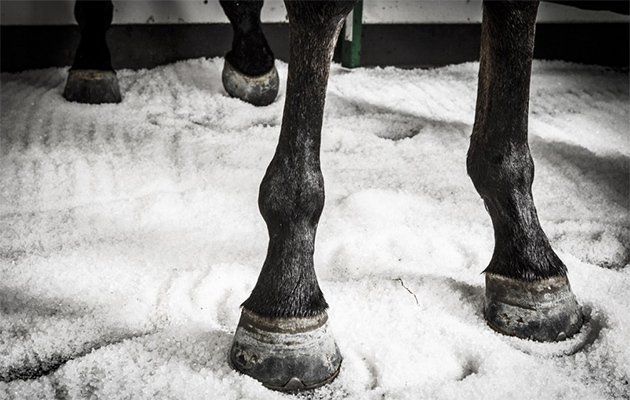Is Salt the Secret to a Healthy Horse?
Could salt be the answer to keeping your horse in good health?

Article by Rachel Turner | Horse & Hound
Australian Richard Butterworth said he has “no doubt” that within a decade, salt therapy will be a “standard inclusion in the training regime of thoroughbred horse stables across the globe”.
The founder of Equine Salt Therapy spoke at the Horse Tech Conference in London on 18 October.
His therapy recently made its overseas debut, with salt treatments taking place in the Middle East, Ireland and United States, as well as Australia.
The Process
Horses having the treatment are taken into a purpose-built stable.
The stable is infused with a “highly concentrated” level of Equine Salt Therapy’s mineral salt.
“It is a natural health treatment for horses that involves the controlled congestion of dry mineral salts through the horse’s respiratory system and coat simultaneously,” said Mr Butterworth.
“The total effect is to rapidly replenish depleted mineral salts and rejuvenate cells, clear mucus and treat a variety of skin conditions such as dermatitis, boils, mud fever and ringworm, as well as general wound care.
“It has shown to be a great help with speeding up the animal’s recovery from travel sickness and anxiety.
“The principle behind the treatment is the same therapy for humans, known as halo therapy, but applied to horses.”
The horse is required to stand in the stable for 15 minutes a day for three consecutive days.
The therapy is also recommended by Mr Butterworth for use in pre-race preparation and post race recovery.
The Trainer's Verdict
Melbourne-based trainer Peter Moody is among those using the system.
The first equine salt chamber was installed at his yard.
“We’ve been pleased,” he said in a previous video interview, which Mr Butterworth showed at the conference.
“We went into it a little bit blind and we did a test period. While some things are a little inconclusive, we’ve seen the benefits from it, from not only their respiratory systems but with skin ailments as well.
“The big plus for me is it’s natural.”
In the past 18 months, 12 mobile salt chambers have been built in Australia, as well as the fixed purpose-built chambers at yards.
Meanwhile, Mr Butterworth is seeking an independent scientific study of the treatment.
“We know some people might think that it’s a bit weird and dismiss something as being gimmicky and new age, like some aromatherapy gone mad, but we’re being judged in the field purely on results,” added Mr. Butterworth.
A Vet's View
Australian vet Christopher Elliott spoke favourably of the treatment.
“I used it a lot at Randwick,” he told H&H. “It’s great for respiratory cases and clears up mucus quicker than normal.
“It’s also good for coughs and wounds — they heal quicker.”
Mr Elliott said yard staff with asthma would volunteer to go into the salt room with the horses as it would “clear their lungs up”, similarly the room was “very popular” with staff with allergies and skin problems.
“[Mr Butterworth] is looking for vets to do proper clinical studies into it’s affects,” he added, stating that at this stage there was “zero science” behind the process.

LOCATIONS
Delaware
Florida
Maryland
Pennsylvania
STAY INFORMED
Newsletter
We will get back to you as soon as possible
Please try again later
All Rights Reserved | K.H. Phipps LLC | Privacy Policy
